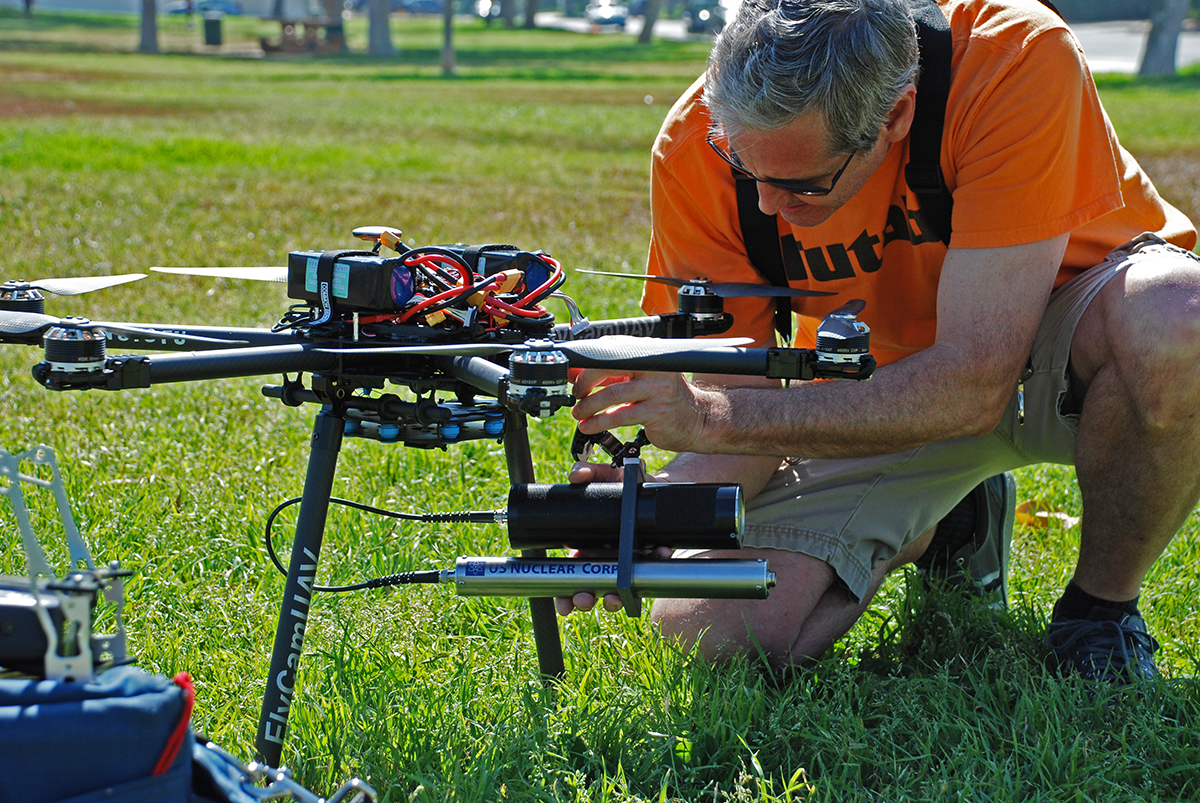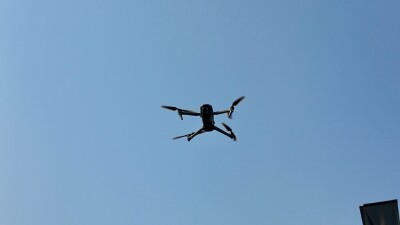We’ve talked about the dull, dirty and dangerous jobs that drones are performing these days, but capabilities are now about so much more than making a task simpler or easier. UAVs can be utilized to detect radiological, biological and chemical threats to ensure the safety of countless people. Developments in this area are coming from places you might expect, and even from some you wouldn’t.
FlyCam UAV is a company known for capturing the amazing aerial images and video utilized in countless film and television productions, but their partnership with the US Nuclear Corp has allowed them to make an impact from the sky in a much different way. FlyCam UAV has launched the Cypher 6 and the NEO, which are designed for use with US Nuclear Corp's DroneRad aerial radiation detection system. DroneRad detects particles that contain radiation, and the UAVs can be used to provide data around where these chemicals might be present in various situations and circumstances. Full details are available via the press release below.
A look at The NEO, which will be displaying at the show,
 Southern California Commercial UAV Company Teams Up with a Radiation Detection Company to Create a Life Saving UAVYou may have seen FlyCam UAV's aerial production work, but the UAV company that's known for its stunning cinematography recently partnered with US Nuclear Corp to create a new device that's right out of the movies — and can save real lives.FlyCam UAV launched the Cypher 6, a commercial-grade hexacopter, and The NEO, an all-weather commercial co-axial octocopter. The platforms are designed for use with US Nuclear Corp's DroneRad aerial radiation detection system. DroneRad detects particles that contain alpha, beta, gamma and neutron radiation. A gas collection option tests for the presence of chlorine, biological particulates, and aerosols such as anthrax and nerve gas, making the FlyCam UAV/US Nuclear Corp UAV suitable for radiological, chemical and biological detection missions. Future upgrades to the DroneSensor package will detect methane and diesel fumes.The UAVs can be used to detect radiation leaks in nuclear power plants or flown into plumes of smoke from a burning building to give first responders immediate data about what kinds of hazards might be present. It can also be used for to monitor public events, sea ports or geographic areas to detect possible dirty radiological bombs or the use of chemical and biological agents.The DroneRad with the Cypher 6 and NEO UAV configurations acquires and relays data to the operator in real-time. The data can be tagged with GPS coordinates and stored on-board for post-flight download and viewing, or it can transmit data to a base station wirelessly for live monitoring. The data consists of a series of measurements of radioactive intensity tagged with GPS data for color coded display on a map. The data can be displayed as a full gamma spectrum, allowing the identification of radioactive isotopes."Sensors mounted on UAVs is the perfect marriage of two technologies that will be a game changer for a variety of different industries," Jeri Donaldson, CEO and owner of FlyCam UAV, said. "In addition, the need for security is at an all-time high and our technology can remove the human element from a potentially dangerous situation. The practical and potential applications of the Cypher 6 and Neo with US Nuclear Corp.'s DroneRad sensor package are enormous and we have yet to see all of the use cases of the devices."The Cypher 6, Neo and DroneRad are available now through FlyCam UAV and US Nuclear Corp. For more information, visit http://www.flycamuav.com or http://www.usnuclearcorp.co—About FlyCam UAV:FlyCam UAV utilizes aerial imaging systems to deliver stunning footage for film and television to agricultural and industrial inspections. From 10 feet off the ground to 400 feet in the air, FlyCam UAV gets it done on time and on budget. The company recently partnered with US Nuclear Corporation to create the Cypher 6 and NEO UAV platforms and the DroneRad sensor package, which can detect radiological threats. With a gas collection option, it can also find chemical and biological agents.
Southern California Commercial UAV Company Teams Up with a Radiation Detection Company to Create a Life Saving UAVYou may have seen FlyCam UAV's aerial production work, but the UAV company that's known for its stunning cinematography recently partnered with US Nuclear Corp to create a new device that's right out of the movies — and can save real lives.FlyCam UAV launched the Cypher 6, a commercial-grade hexacopter, and The NEO, an all-weather commercial co-axial octocopter. The platforms are designed for use with US Nuclear Corp's DroneRad aerial radiation detection system. DroneRad detects particles that contain alpha, beta, gamma and neutron radiation. A gas collection option tests for the presence of chlorine, biological particulates, and aerosols such as anthrax and nerve gas, making the FlyCam UAV/US Nuclear Corp UAV suitable for radiological, chemical and biological detection missions. Future upgrades to the DroneSensor package will detect methane and diesel fumes.The UAVs can be used to detect radiation leaks in nuclear power plants or flown into plumes of smoke from a burning building to give first responders immediate data about what kinds of hazards might be present. It can also be used for to monitor public events, sea ports or geographic areas to detect possible dirty radiological bombs or the use of chemical and biological agents.The DroneRad with the Cypher 6 and NEO UAV configurations acquires and relays data to the operator in real-time. The data can be tagged with GPS coordinates and stored on-board for post-flight download and viewing, or it can transmit data to a base station wirelessly for live monitoring. The data consists of a series of measurements of radioactive intensity tagged with GPS data for color coded display on a map. The data can be displayed as a full gamma spectrum, allowing the identification of radioactive isotopes."Sensors mounted on UAVs is the perfect marriage of two technologies that will be a game changer for a variety of different industries," Jeri Donaldson, CEO and owner of FlyCam UAV, said. "In addition, the need for security is at an all-time high and our technology can remove the human element from a potentially dangerous situation. The practical and potential applications of the Cypher 6 and Neo with US Nuclear Corp.'s DroneRad sensor package are enormous and we have yet to see all of the use cases of the devices."The Cypher 6, Neo and DroneRad are available now through FlyCam UAV and US Nuclear Corp. For more information, visit http://www.flycamuav.com or http://www.usnuclearcorp.co—About FlyCam UAV:FlyCam UAV utilizes aerial imaging systems to deliver stunning footage for film and television to agricultural and industrial inspections. From 10 feet off the ground to 400 feet in the air, FlyCam UAV gets it done on time and on budget. The company recently partnered with US Nuclear Corporation to create the Cypher 6 and NEO UAV platforms and the DroneRad sensor package, which can detect radiological threats. With a gas collection option, it can also find chemical and biological agents. 















Comments